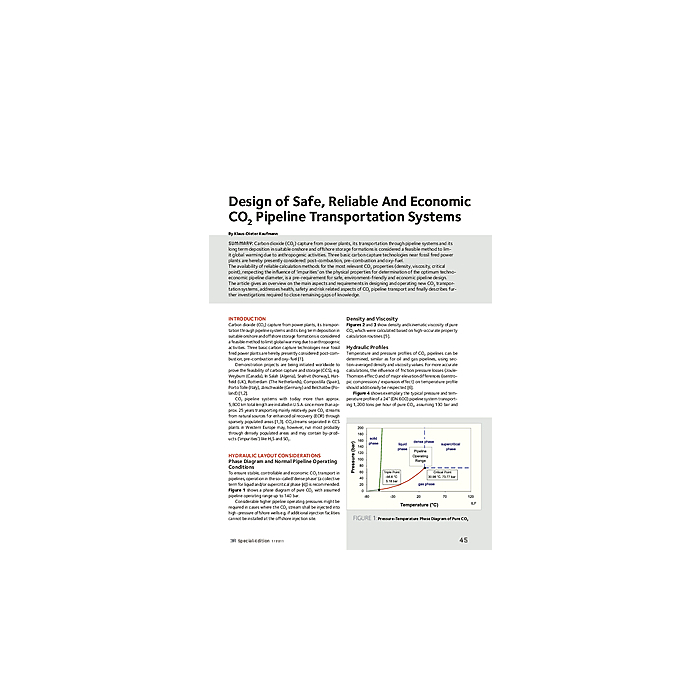Design of Safe, Reliable And Economic CO2 Pipeline Transportation Systems
4,90 €
Auf Lager
Artikelnummer
01252_2011_SP1_08
SUMMARY: Carbon dioxide (CO2) capture from power plants, its transportation through pipeline systems and its long term deposition in suitable onshore and offshore storage formations is considered a feasible method to limit global warming due to anthropogenic activities. Three basic carbon capture technologies near fossil fired power plants are hereby presently considered: post-combustion, pre-combustion and oxy-fuel. The availability of reliable calculation methods for the most relevant CO2 properties (density, viscosity, critical point), respecting the influence of 'impurities' on the physical properties for determination of the optimum techno-economic pipeline diameter, is a pre-requirement for safe, environment-friendly and economic pipeline design. The article gives an overview on the main aspects and requirements in designing and operating new CO2 transportation systems, addresses health, safety and risk related aspects of CO2 pipeline transport and finally describes further investigations required to close remaining gaps of knowledge.
| Autoren | Klaus-Dieter Kaufmann |
|---|---|
| Erscheinungsdatum | 30.04.2011 |
| Format | |
| Zeitschrift | 3R - Special 1 2011 |
| Verlag | Vulkan-Verlag GmbH |
| Sprache | English |
| Seitenzahl | 5 |
| Titel | Design of Safe, Reliable And Economic CO2 Pipeline Transportation Systems |
| Beschreibung | SUMMARY: Carbon dioxide (CO2) capture from power plants, its transportation through pipeline systems and its long term deposition in suitable onshore and offshore storage formations is considered a feasible method to limit global warming due to anthropogenic activities. Three basic carbon capture technologies near fossil fired power plants are hereby presently considered: post-combustion, pre-combustion and oxy-fuel. The availability of reliable calculation methods for the most relevant CO2 properties (density, viscosity, critical point), respecting the influence of 'impurities' on the physical properties for determination of the optimum techno-economic pipeline diameter, is a pre-requirement for safe, environment-friendly and economic pipeline design. The article gives an overview on the main aspects and requirements in designing and operating new CO2 transportation systems, addresses health, safety and risk related aspects of CO2 pipeline transport and finally describes further investigations required to close remaining gaps of knowledge. |
Eigene Bewertung schreiben


